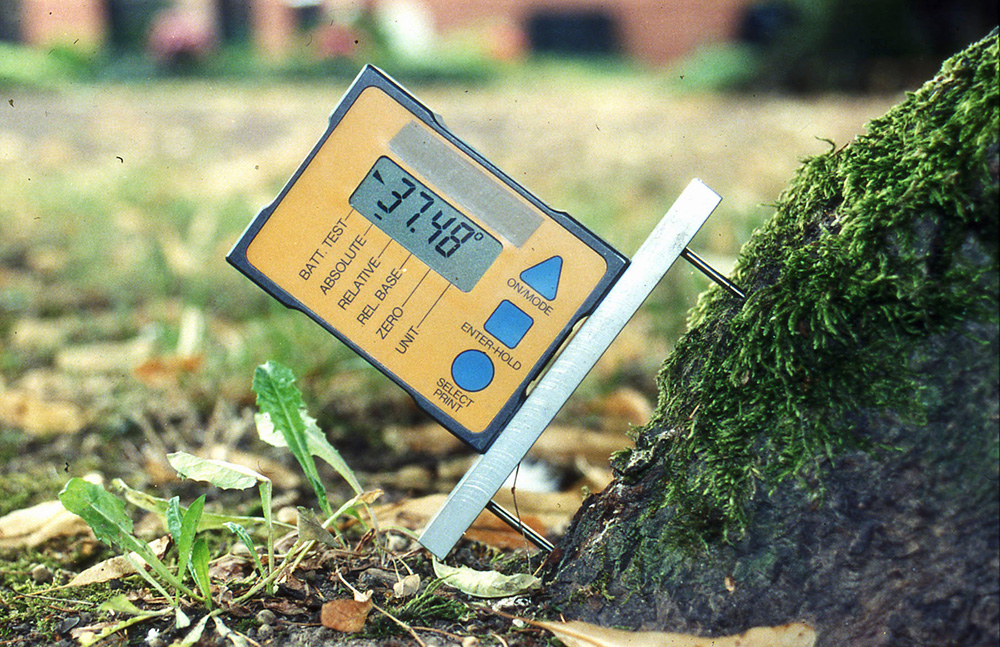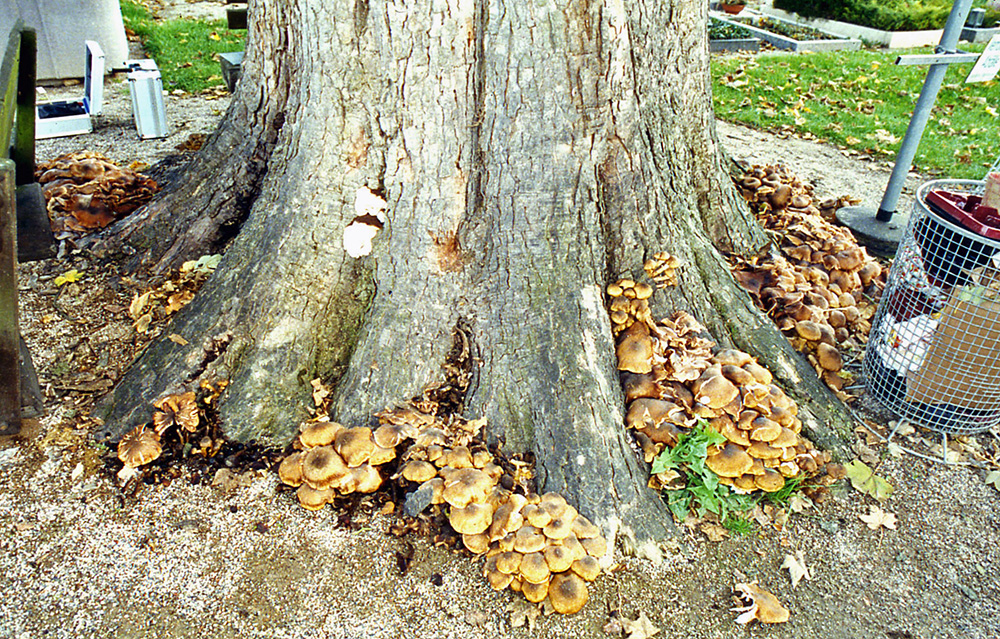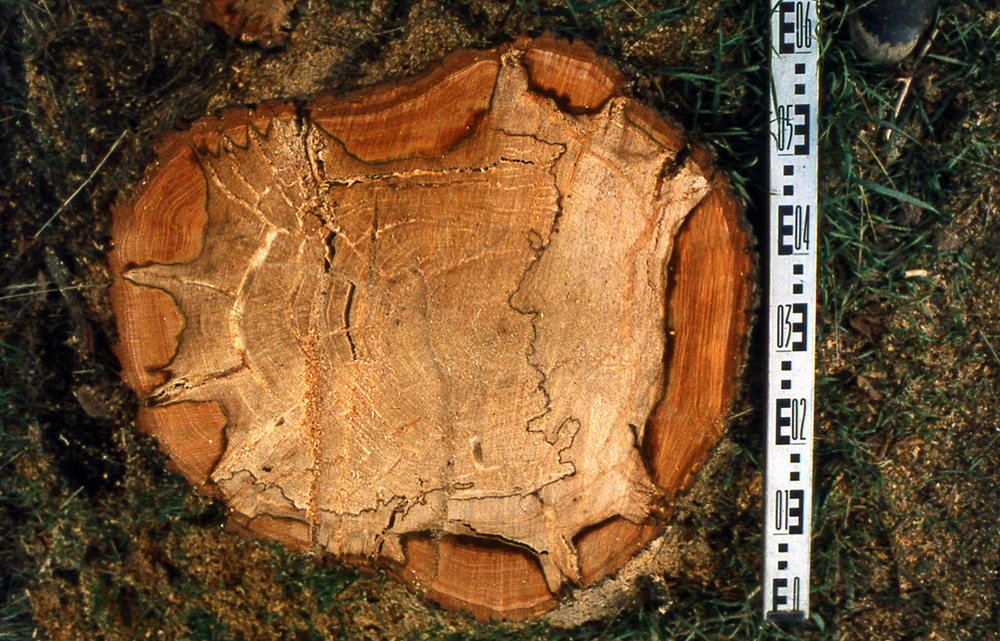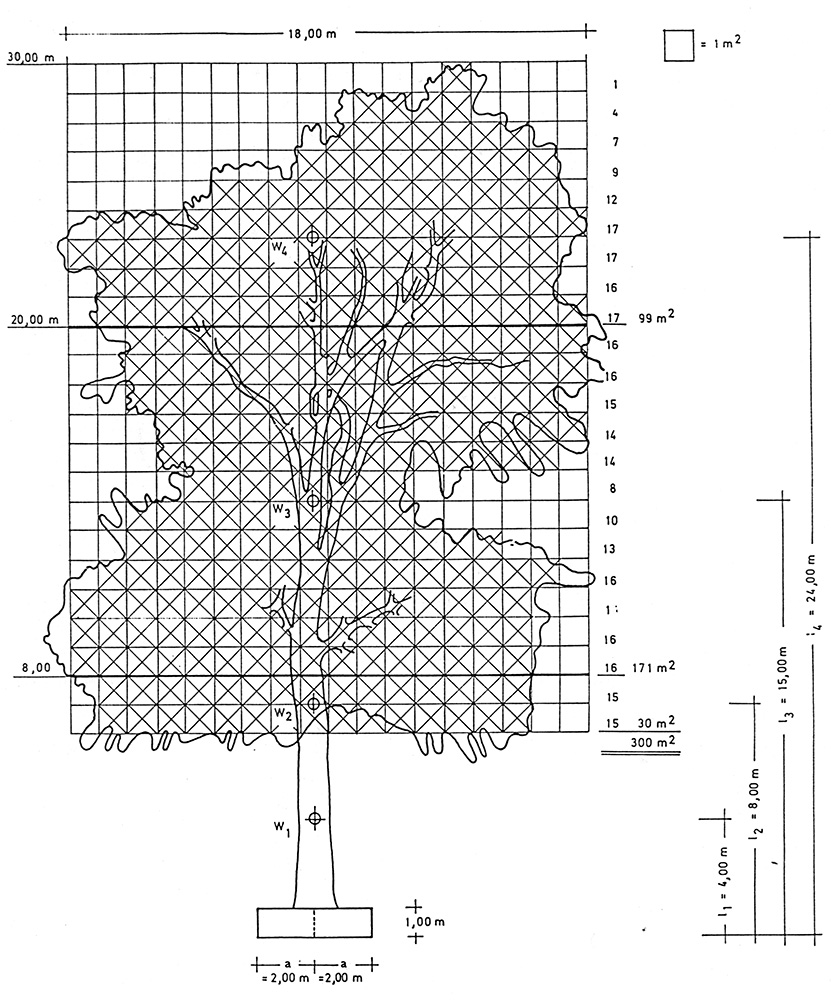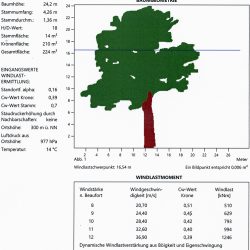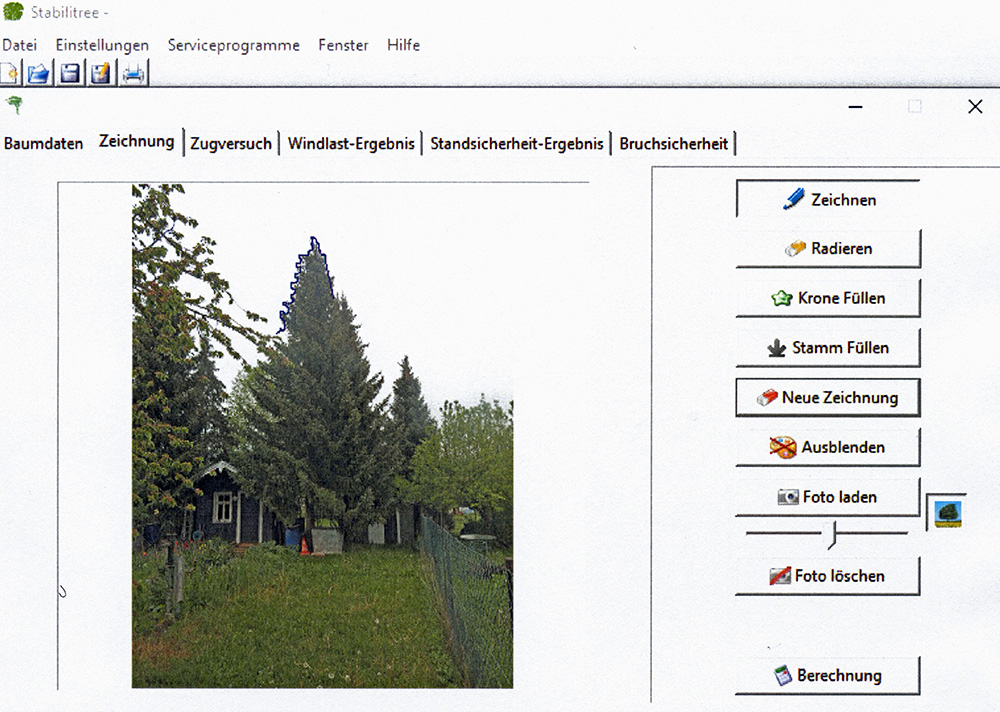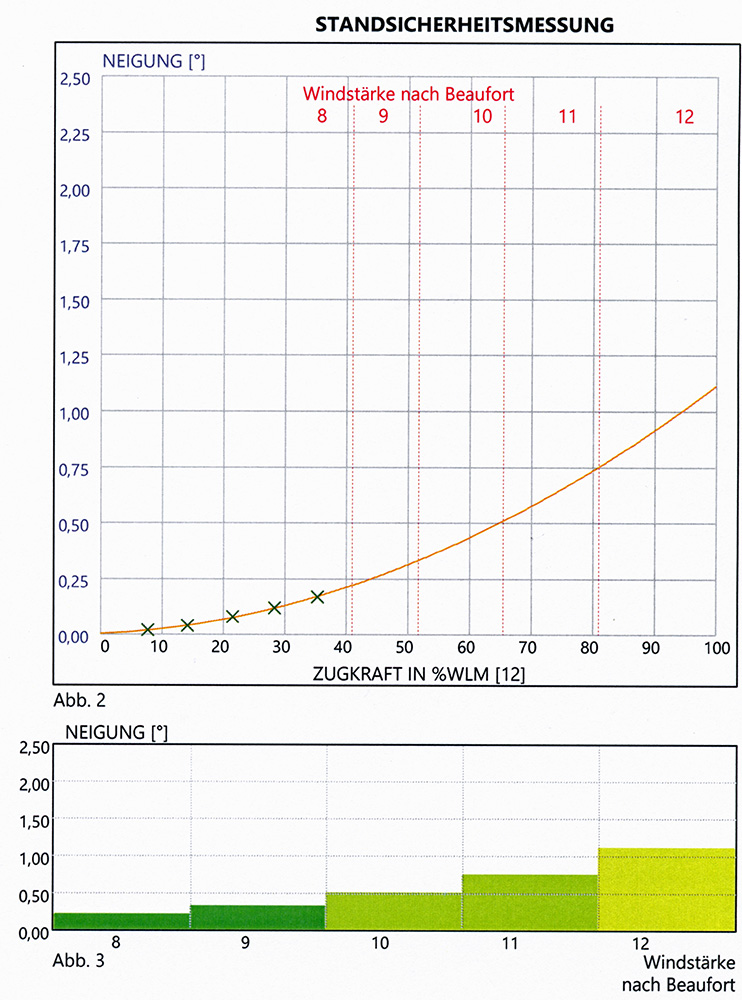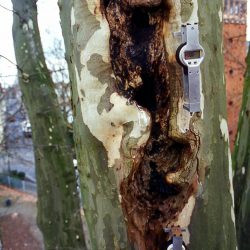Avoidance of uprooting or rupture of trees is part of the work of tree experts.
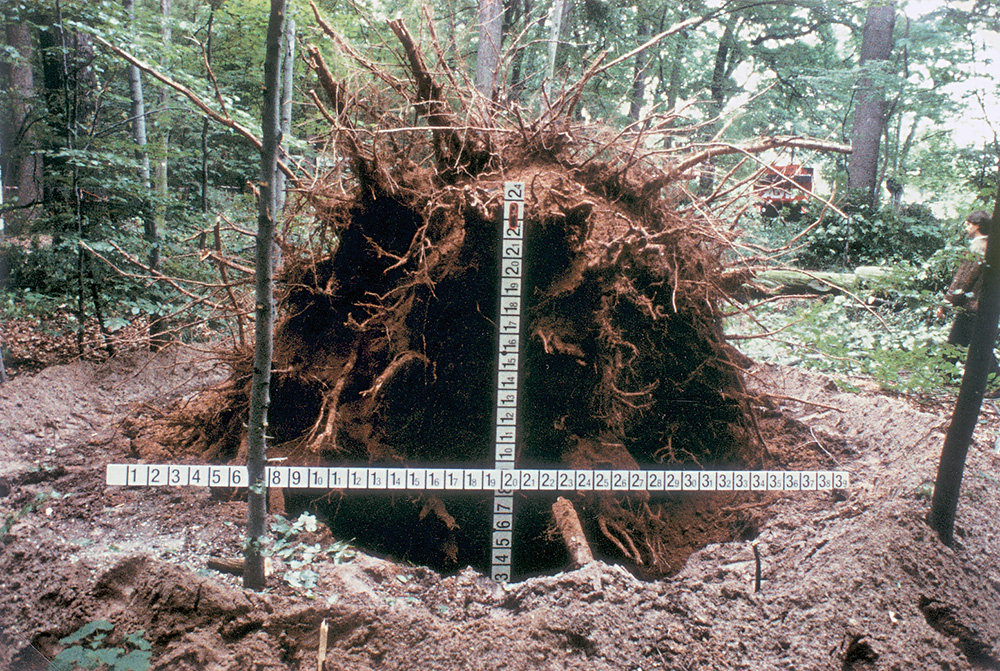
Normally healthy trees standing freely are so safe in their structure that they can easily withstand high wind velocities (e.g. 12 Beaufort).
Urban trees are often damaged for example by the laying of pipes or compression of the earth, as well as through additional mechanical damage to the upper parts of the tree and other stress factors, the vitality has been significantly affected. These factors, combined with the effect of harmful organisms, primarily certain fungi types which attack the wood, often cause such trees to reach the limits of their strength and stability prematurely.

The investigation about the tree safety factors against outer loads (wind) is called TREE STATICS. Tree statics was founded in the year 1980 by Günter Sinn†. He first of all thought it is necessary to calculate the wind force.
The following parameters are included in the calculation of wind load:
W = cw x qeff x A
cw = coefficient of wind resistance, taking particular note of the shape, form and structure of the crown.
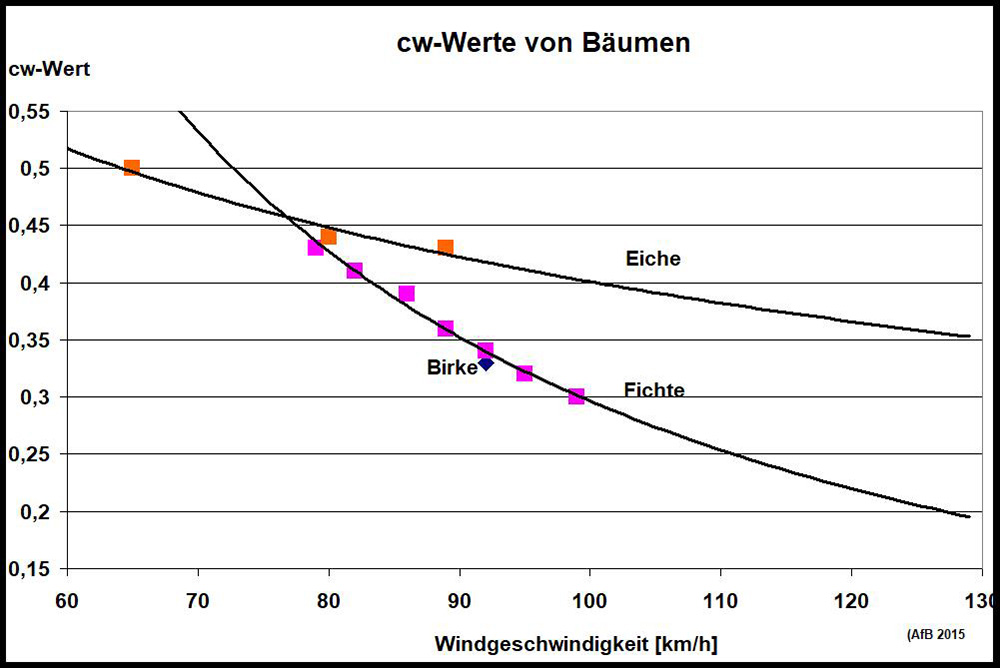
qeff = effective wind pressure, taking particular note of the actual location of the tree, wind properties, turbulences a.o.
A = total surface area exposed to the wind.
A simplified photo-optical process, combined with a method of measuring the tree´s height, has been developed by Günter Sinn† in order to calculate precisely surface area of a tree exposed to the wind.
At least the wind load is dependent on the lever-arm of the force in the crown to the ground.
Knowing the load values which are used to determine strength and stability is an indispensable requirement of any calculation in tree statics.
To get real results about tree stability Günter Sinn† furthermore investigated the tree pulling test method. First thoughts about this new method he published in 1982, the first real static-integrated pulling test on a damaged tree (Quercus robur) in a city he made in the year 1984 in Kaiserslautern in Germany.
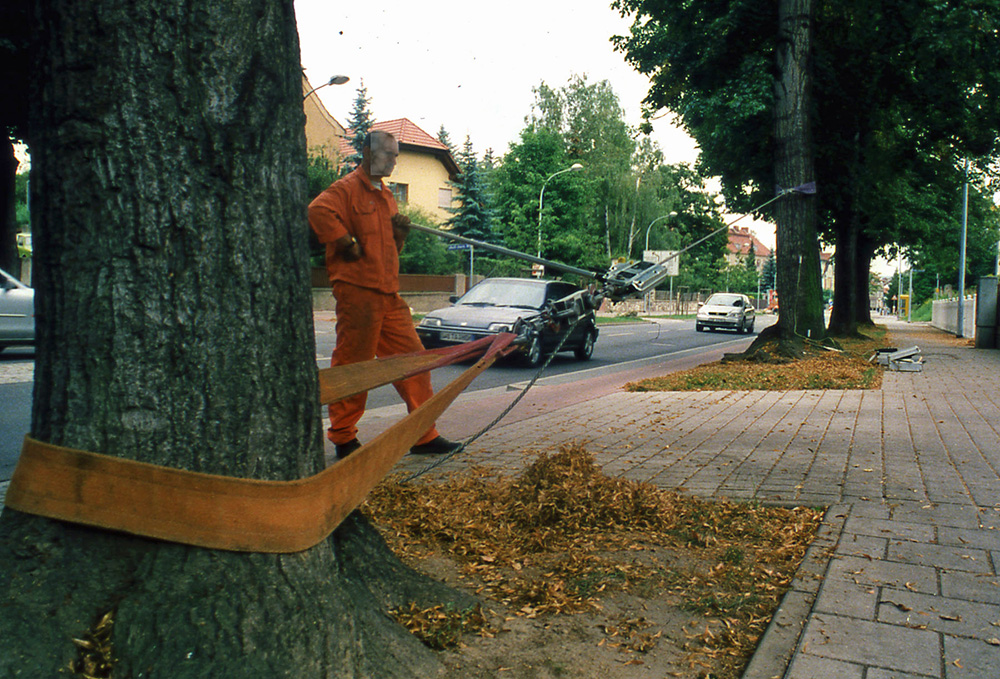
Today we make measurements of the inclination behavior (AfB-method) and the tensile behavior (Dilatometer-method) under a definite pulling force simulating a low wind velocity (normally 8 Beaufort). Investigating a tree this way we get best and real results about tree statics.
